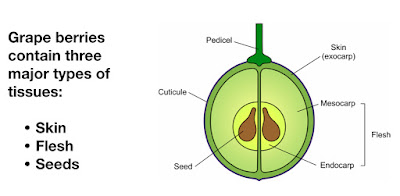Little did I know that when I said I would blog about the geology of the Alsace, that I was about to discover a wine region with one of the most diverse soil types of any wine region in the world. Along the way, I think I learned a lot about the early formation of our current continents. To recap, here is my geological journey so far:
I began my blogposts of the geology of the Alsace by showing a cartoon of
The Layout of the Land as well as the various soil types that can be found in the Alsace wine regions. I could have/should have stopped there, but I wanted to know where the mosaic of soil types that exist in the Alsace came from. I learned that the Alsatian region was part of a graben system and I blogged about it in
The Location of the Upper Rhine Graben in the context of the European Cenozoic Rift System, which formed in the late Eocene Epoch some 50 million years ago.
In the third blogpost on the geology of the Alsace, I narrowed the focus from the Upper Rhine Graben to
The Vosges and the Black Forest Mountain. While the Upper Rhine Graben formed in the Eocene, the Vosges and the Black Forest uplift was of an even more recent event, occurring perhaps during the late Pliocene or the early Pleistocene Epochs (5.3 Ma).
All of these blogs were written to put into context, the prime focus which was the most recent post on geology,
The Vosges Mountain Paleozoic Evolution. It is during this ancient time some 350 Ma that the diverse soil types were being formed. This blogpost showed in pictures the soils from the northern Vosges to the southern Vosges.
Here in a cartoon form is what I learned about the geology of the Alsace:
1,2
When putting the information of where and how the various soil types formed, we can update this picture which was part of the first blog on
Alsace Part 2: The Geology - The Layout of the Land to include the impact of the soil on the style of wines being produced.
1
Next up on my discovery of the Alsace Wine Region, the history of the Alsace. Stay tuned!
Reference:
1.
Vins Alsace,
Remarkable Geology: A Mosaic of Unique Soils.
2. Michael Schafer Esq.,
The Amazing Alsace.
3. Jeanne Vidal, Albert Genter, Overview of naturally permeable fractured reservoirs in the central and southern Upper Rhine Graben: Insights from geothermal wells, Geothermics, 74 (2018) 57–73.
4. Y. Rotstein1, and M. Schaming,
The Upper Rhine Graben (URG) revisited: Miocene transtension and transpression account for the observed first‐order structures,
TECTONICS, VOL. 30, TC3007, doi:10.1029/2010TC002767, 2011.
5. Hinsken, Sebastian & Ustaszewski, Kamil & Wetzel, Andreas, (2007), Graben width controlling syn-rift sedimentation: the Palaeogene southern Upper Rhine Graben as an example,
International Journal of Earth Sciences, 96, 979-1002, 10.1007/s00531-006-0162-y.
















